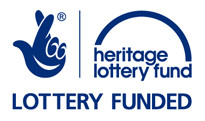Heritage Funding
I went to Killhope in seventy-four
and tried my hand on the washing floor.
Looking for quartz and fluorspar,
I found none to bring home in my little car.
One thing I remember was three men to a bed;
and their watery crowdie with hard crusty bread.
Mr. Sopwith, the agent, and his little white lies
He said accidents happened through eating too many pies.
My interest was quickened I needed to learn more.
Of lead mining and smelting there are books galore.
The North Pennine range interested me most.
Off to Nenthead I went in search of a ghost.
The ballroom at Smallcleugh is a site to behold;
the bacon-butty was welcome, I was feeling quite cold.
There are 200 miles of passageways under Nenthead
and 90 entrances to where the workers mined lead.
Newspaper articles provide useful information.
Fallowfield lead miners made the following declaration,
In eighteen seventy eight without a drop in production
the workers accepted a two shillings wage reduction.
A prospector named Jacob Walton is recorded to have said
“The life blood of the Dales in the 19th century is lead”.
“The Romans discovered our lead as they built their wall,
and from it the Normans made coins for one and all”.
Properties for sale are a source to view,
Hartleycleugh at Carrshield will give you a clue.
Swindal Robert, the father, was a miner of lead
Joseph, the son, lead ore dresser, the article said.
English Heritage produces an annual list
of monuments needing funds because they’re at risk.
There’s Bridges and Towers, Barns and Castles
North Pennines Lead Mines and Border-land Bastles.
My father told me of a very old Mill;
Dukesfield, he said, and there’s Arches there still.
Discovering what the site hides would be glorious fun;
but finances are needed for the work to be done.
By Pat Wilson 2012

